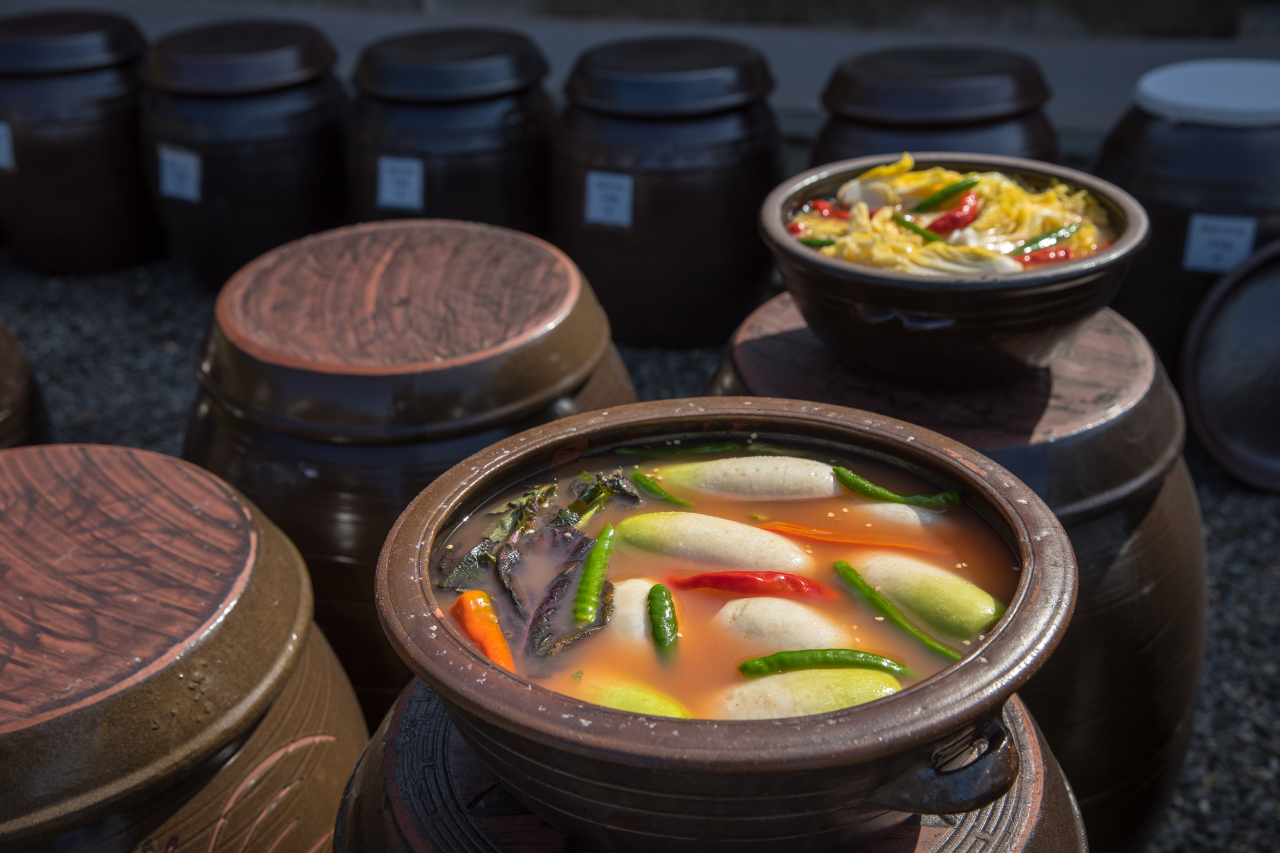| Dongchimi (Korea Buddhist Culture Group) |
Venn asserts that food isn’t the only food at the temple. “Cooking represents the process of transforming food from nature into culture, applying various techniques to make it more beautiful and tasteful,” Gyeho said. The food that monks eat every day becomes their medicine.Our bodies are part of nature, so we have to eat seasonal ingredients from the earth.”
For example, in the spring when new shoots appear, they eat young leaves and vegetables. Vinegar and sugar give it a sweet and sour taste to wake up the sluggish winter body. Eat leafy vegetables in the summer and root vegetables such as carrots, burdocks, and radishes in the fall.
“At Yamadera, most of the plants are eaten, and any leftovers are composted. We do not throw away used tea leaves. During the season, a lot of radish and Chinese cabbage scraps are produced.The leaves and greens are dried, and the radish is sliced and dried.It is useful when making soup, jjigae, pickles, etc.Dried cabbage and radish in winter. If you make a spicy soup like this, your body will warm up.The essence of shojin ryori is to cook seasonal ingredients without using special techniques.It’s not just cooking, it’s the wisdom of life.”
Ven. Gyeho says his three main elements of the temple diet are purity, kindness, and harmony with the law. This means washing the ingredients well, softening them, and cooking them wholeheartedly according to the Buddha’s teachings.
donchimi
If you eat dongchimi with a little ice in the middle of winter, you will feel lighter.
This is due to the digestive enzymes diastase and lactic acid bacteria formed during fermentation. Ven. Keho makes donchimi with two types of olgari (young Chinese cabbage) and radish. An appetizing early winter side dish that retains the freshness of winter-picked daikon radish and radish.
material
– Japanese white radish
– seaweed
– mustard greens
– pear
– Ginger
– salt
– Glutinous rice flour
direction
1. Wash the radish thoroughly and sprinkle salt evenly. Leave for 3 hours.
2. Make glutinous rice paste.
3. Grate the ginger and pear on a grater.
4. Take out the salted and softened daikon radish and save the brine.
5. Put the seasonings 2 and 3 into the salt water of 4, add more water and salt to make dongchimi water.
6. Spread seaweed and mustard greens on the bottom of an earthenware pot and add daikon radish. Add 5 donchimi water.
7. Ferment for about a week.
Courtesy of Daehan Buddhist Culture Group
————————————————– —————–
The food of the temple is the food of the ascetic who appreciates all life and wishes for world peace. The Korean Buddhist Cultural Corps operates a Korean temple food center where guests can learn about and experience temple food. — Ed.
Hye Young Kim ([email protected])

